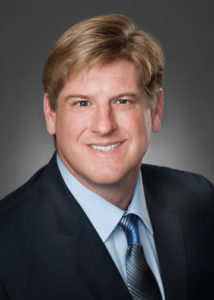
Mission Wealth has all the information you need to grow your wealth and protect your assets for the future. In this guide, we’ll take you through some retirement planning considerations. We find it helpful to do so in 3 stages.

Stage 1: First of all, we’ll help you assess how ready you are for retirement. Anybody can save for the future, but to save effectively as part of a retirement plan it’s critical to know how well you’re doing right now. We’ll look at important considerations and get an idea of your stage in the retirement savings process. We understand that all our clients are different. So this part of the document is about working out your unique needs and what you’ll need to do to achieve your goals.
One way to understand how you’re doing financially is to look at others. We don’t recommend that you stop there, but it’s not a bad idea to get an idea of where you stand compared to others in your age group. Before you give yourself a pat on the back or cringe with shame, we’d like to remind you that keeping up with the Joneses can get in the way of deeper, more meaningful, personal goals. Most Joneses aren’t saving nearly enough for a comfortable retirement.
Stage 2: Once you’ve had a sobering or pleasantly-surprising look at your current financial situation, we will give you some practical ways to get financially prepared for the future you want. This includes a look at our retirement strategy tool, which will help you get on the path to success and stay there.
Stage 3: In part three, we’ll project you into the future and look at health care options in retirement, helping your parents with their financial needs, and the three stages of retirement account withdrawals.
Finally, we’d like to tell you a little about our talented team at Mission Wealth and how we can help you achieve a happy retirement. Our personalized services and our partnership approach to growing your wealth will make your future as bright as possible.
Retirement Stage One
1. Are You Retirement Ready?
You may be considering retirement but are concerned about whether you have saved enough. Are you apprehensive of moving from a regular paycheck to no paycheck? The retirement decision is often psychologically challenging and you are not alone. Not only will cash flow be cut, but some find that their identity was defined by their job and they miss that as well. From a financial perspective, you need to understand you are moving from the accumulation stage of life to the distribution stage. Let’s run through some considerations.
Wealth Management (Confronting Your Emotions)
People who have prepared themselves for retirement have generally been "savers" their entire lives. It’s common for them to experience anxiety when they stop working. As soon as that paycheck ends and they start invading principal to pay bills, it’s normal to experience some discomfort.
To help combat these feelings, consider a cash flow system where income from your investments is funneled into your checking account. This mimics the paycheck that is no longer coming and often provides emotional support.
In the distribution phase of life, you should also prepare yourself psychologically. Your overall worth may fluctuate going forward. Unless you have amassed large sums of money and have not increased your lifestyle spending correspondingly, people may spend all if not more than comes in. Thus, they may save little to nothing in retirement.
This is especially challenging in the low interest rate environment we are in today. There is no easy fix for this. Some are faced with having to assume more investment risk, invading principal, or reducing the lifestyle in which known income matches known expenses.
The key takeaway is to make sure you have saved enough to support your lifestyle as you enter retirement. Create a strategy designed to have 90 percent of your known expenses covered by known income. Hopefully, your portfolio mix can include investments that can combat future inflation while maintaining positive cash flow.
Investment and Tax Management
There is no “one size fits all” for investments. Each person's needs are unique. But you should pay special attention to the rules and circumstances surrounding your specific retirement accounts. For example, keep in mind that qualified plan distributions coming from IRAs, 401(k)s and the like are subject to marginal tax rates and not the lower capital gain bracket. This can influence when and where you create income for yourself.
In retirement, the distribution phase often changes the way you approach investment management. A large allocation to growth investments may have helped you retire, but it may need to be altered to generate more consistent income as priorities change.
One goal is to enter retirement debt-free. This helps people to modify their lifestyle spending when economic forces are unfriendly. If you enter retirement with a large debt, however, you may find it challenging to modify your expenses.
Wealth Protection
Some people focus on re-positioning insurance to reduce expenses. Or they reallocate contract values to long-term care protection. Life insurance tends not to need too much management, unless your estate is subject to inheritance taxes.
Disability insurance policies generally have little to offer in benefits compared to the premium as you approach retirement. This is because there’s usually an age limit for payout.
And don’t overlook health insurance planning. If you retire before Medicare eligibility, you may be shocked by the insurance premiums. Pay particular attention to this, especially if you have health concerns.
This next chapter of life is about distributing your wealth as effectively as possible. This may be the "golden age" for some, but it can also be the "revenue years" for the IRS. The sources of your retirement income and the tax consequences of pulling from various accounts can differ widely from person to person.
Some people put off pulling from their tax-qualified accounts until they run out of the “cheap tax” money. While that plan may help reduce taxes today, it may not be the best plan as their wealth becomes concentrated in “tax toxic” assets.
Some retirees had planned for taxes to be lower in retirement than during the working years, but that is not always the reality. Make sure you do some tax projections to secure your assets for the future.
2. How Do Your Retirement Savings Compare to Other People Your Age?
“How am I doing?” is a big question most people have when it comes to their money. One way we look for answers is by comparing ourselves to neighbors, friends, and family. Even though we know deep down that “the grass is always greener on the other side,” it can be hard to look away when our phones, computers, and TVs are consistently encouraging us to make these comparisons.
We understand the worry that you might not be keeping pace with your peers. But if you’re wondering about where your retirement savings “should be,” it’s important that you look at these numbers within the proper context.
The Numbers
According to Nerdwallet, here’s how average retirement savings break down by age:
Under 35
- Average household retirement savings: $32,500
- Median household retirement savings: $12,300
Ages 35 to 44
- Average household retirement savings: $100,100
- Median household retirement savings: $37,000
Ages 45 to 54
- Average household retirement savings: $215,800
- Median household retirement savings: $82,600
Ages 55 to 64
- Average household retirement savings: $374,000
- Median household retirement savings: $120,000
Ages 65 to 74
- Average household retirement savings: $358,400
- Median household retirement savings: $126,000
As you might have guessed, retirement savings tend to ramp up as we age. In part, this is because the older we get, the more real retirement becomes, and the more prepared we want to be.
As fiscally responsible people age, their debt level tends to drop as well. No more kids to support. No more student loan payments. Vehicles and houses are paid off. Credit cards are used less (unless you’re focused on accumulating points) and paid down. There’s only so much you can keep in a low-interest savings account before you want to put more of your money to work.
The numbers behind the numbers
If these figures seem a bit low to you, you’re not wrong. Most financial experts believe that, generally, Americans are not saving nearly enough for retirement.
Yes, having a couple hundred thousand in savings and investment accounts may sound like a lot of money. But people are also living longer and they are living more active lives than ever before. That means your retirement assets are going to have to last longer than your parents’ and grandparents’ did.
As pensions continue to dry up, the responsibility for preparing for retirement has shifted increasingly to individuals. That’s going to be a challenge for anyone who’s significantly below these savings levels. It’s going to be a BIG problem for the 43 percent of households headed by someone 35-44 who doesn't have any retirement savings at all.
Is an “average” retirement good enough?
Let’s say you’re the average 65-year-old with just over $300,000 in the bank. How long is that $300,000 going to last? Is that nest egg going to provide the retirement you’ve been dreaming about and working for most of your life?
There’s no one-size-fits-all answer to those questions. We all have different passions, goals, healthcare needs, and lifestyle expectations. Some retirees might live quite happily at or even a little below the average level.
But what happens if your spouse has an accident and needs to see a specialist? What if your roof needs a major repair? Will an emergency stretch your “average” retirement too thin?
What happens if, five years into a twenty-year retirement, you start to feel bored and restless? What if you decide you need to see more of the world? And what if you can’t let go of that passion project you’ve always wanted to develop into your own business? Will your nest egg provide for changes that will make your retirement more fulfilling?
How your money measures up
Successful retirement planning balances the things that we can anticipate with the things we can’t. That’s why, as we work together, we’ll never hold up a graph comparing where your money is to where your peers are. We’re not interested in outside standards of “measuring up.” We’re interested in how your money measures up to what YOU want out of life, and what you’ll need to stay comfortable on rainy days.
We can help you adjust as necessary to make sure that both are on track to hit the standard that matters most: yours.
Retirement Stage Two
3. How to be Financially Prepared
Life can be unpredictable and busy. Most everyone is caught up in day-to-day activities. The young family is struggling to balance school and sports along with professional and household demands. The retired couple is busy with volunteer activities, travel, personal interests and family support. Our calendars are full.
Such is life in the modern age, but what about unexpected events? We are often unprepared for unplanned events and they can become a disruptive shock to our “master plan.”
It’s unpleasant to think about such an occurrence and that may be the reason that so many people fail to prepare themselves or their families. But we all know someone who was in the wrong place at the wrong time or who became ill out of the blue. We hear these stories about real people who either suffer themselves or who suffer for those they lost. When we do, we might silently pause and think, “Wow, that could have been me!” In this moment of reflection, it’s natural to ask, “Am I prepared? Is my spouse and are my loved ones set if such an event were to happen to us?”
To help you develop a plan that would allow you to answer “Yes” to the above questions, we advise you to focus on four key areas:
- Open communication – Candid dialogue with your spouse, children, friends and/or advisors can eliminate confusion and conflict when a time of need arises. Providing an explanation of your assets and liabilities can save a lot of time and confusion down the road. Sharing your intentions and desires in clear and up-to-date legal documents should leave no questions for those who follow.
- Estate Planning – An estate attorney can get you an updated Will and Trust document that will ensure your wishes are carried out effectively. Durable powers of attorney should also be created to empower others you trust to be able to step in on your behalf.
- Insurance Coverage – There is no better way to provide protection and liquidity to loved ones in the most challenging times than through a well-planned insurance program. Coverage for home, auto and general liability can protect against virtually any form of accident or calamity.
Disability coverage is prudent to protect your earnings and long-term care protection as you approach retirement. Life insurance can be inexpensive and invaluable. Having adequate insurance protection in place can be the difference between financial security and ruin for many families.
- Master Financial Plan – The roadmap that connects the above three steps is the family financial plan. Whenever dealing with professionals such as your attorney, CPA, broker, insurance agent or wealth manager, your goals will be the first part of any discussion. It is useful to have a document that clearly outlines your desires. If you are having trouble starting the “list,” we find it helpful to think about your objectives as it pertains to Self, Family and Community desires to get the ball rolling.
A clearly developed goals outline affords you the opportunity to have a dialogue with family, professionals and future key support people to whatever degree you feel comfortable. It is the foundation upon which wise personal choices and unique financial decisions should be based.
Once the planning component is completed, investment programs are generally next to be constructed around the “plan". This will optimize your assets based on timelines, taxes, income, liquidity needs, and your own personal risk profile. This is where it is critical to ensure that the estate planning, insurance and tax planning processes are coordinated and working in harmony with your advisory team.
Being prepared and protected for an unforeseen tragedy is a matter of choice. By choosing to have open communication with your family, updated documents in place, adequate insurance protection, and a “master plan,” you can not only optimize your future results but live more fully with the peace of mind that you and your loved ones will be provided for.
4. Our Retirement Strategy Tool for Success
To know if individuals are on track for retirement, Mission Wealth’s co-founders Brad Stark and Seth Streeter devised a formula called the 90/70/30 rule that is easy to use and understand.
“Our mission is to help our clients create a personalized retirement plan so that they can enjoy their golden years. So many individuals who are near retirement question whether they’re on track,” said Stark. “The 90/70/30 rule is a great tool to calculate retirement preparedness.”
The 90/70/30 rule is a formulaic tool to help determine an individual’s level of retirement preparedness in three easy steps:
Ready for Retirement? Retirement Strategy Tool
- Income Gap: Determine all expenses and all anticipated income sources. These will include social security, rental property income, interest, dividends, and pensions. When heading into retirement, we find the most financially secure people have 90 percent or more of their expenses covered by anticipated income. Conversely, people become less likely to achieve their financial goals when their anticipated income covers less than 90 percent of their expenses. Once an individual’s income gap has been determined, the next step in retirement preparedness comes down to their portfolio mix, their goals, and a functional timeline.
- Income Generation: When trying to create the desired income, may take 70 percent or less of an individual’s investment portfolio to cover their expenses via “income” investments. Remember, this portion of the portfolio is designed to address short-term needs. If it takes more than 70 percent to cover expenses, chances are they do not have enough “growth” assets set aside to help guard against inflation and the rising costs they will most likely incur in retirement.
- Inflation Growth: What is not used for income purposes is money that can be allocated to the future. With people living longer into retirement, guarding against inflation is also important. Depending on an individual’s age and health entering into retirement, we generally recommend that at least 30 percent of an individual’s portfolio be dedicated to growth investments so that they can keep pace with rising costs. The longer an individual’s expected retirement, the more that can be allocated to growth. Vice versa for shorter horizons.
Two typical outcomes can come from this formula: individuals have either saved “too much” or “too little.”
Individuals who have saved “too little” may need to assume more investment risk and the increased financial uncertainty that comes with it to fill the gap. Individuals can also look to cut expenses, work longer, or modify their goals.
Those who have saved “too much” should not become greedy with investments but consider taking on the least amount of risk to accomplish their goals and satisfy their needs.
Although this rule is not a substitute for financial planning, it does serve as a tool to help people get an overview of their finances.
5. Health Care Options in Retirement
As you look to the later stages of your life, you will want to understand and quantify all of your options when it comes to housing and potential healthcare costs.
You might wonder if you should try to live with family, stay at home and receive part-time or full-time assistance there, or move to a retirement home where many of these costs are covered and a continuum of care is offered.
Things to Think About
Living with family might mean having loved ones nearby. But are they physically able? Can they afford to provide that kind of care?
Living at home can be comforting, but it can also create isolation from others if one is not very mobile or is unable to drive. In-home care costs add up quickly, too, making living at home the most expensive option.
Moving to a retirement home may require a substantial one-time financial commitment, but can one afford that along with potential healthcare costs as one moves from independent living, to assisted living, to skilled nursing? How and when would a home sale factor into these decisions?
What are the estimated hourly or annual costs of these care options, and what are the approximate ages and time frames when these may occur? What costs does Medicare cover before one starts paying out-of-pocket?
What benefit and tax advantages can be provided by long-term care policies or other strategies that can relieve the potentially high costs of care?
Here are some terms to help you understand your options and what is offered in various health care in retirement scenarios.
Commonly Referenced Retirement Living Terms
- Independent Living – This is a residential living arrangement where individuals can live independently, but have access to additional care services if needed.
- Assisted Living – This refers to a residential living arrangement that provides individualized personal care, assistance with Activities of Daily Living, help with medications, and services such as laundry and housekeeping. Facilities may also provide health and medical care, but care is not as intensive as care offered at a nursing home. Types and sizes of facilities vary, ranging from small homes to large apartment-style complexes. Levels of care and services also vary. Assisted living facilities allow people to remain relatively independent.
- Skilled Nursing – This includes nursing care such as help with medications and caring for wounds. It may also include therapies such as occupational, speech, respiratory, and physical therapies. Skilled care usually requires the services of a licensed professional such as a nurse, doctor, or therapist.
- Activities of Daily Living (ADLs) – These are basic actions that independently functioning individuals perform on a daily basis: bathing, dressing, transferring, eating, toileting, and caring for incontinence. Many public programs determine eligibility for services according to a person's need for help with ADLs. Many long-term care insurance policies use the inability to do a certain number of ADLs (such as 2 out of 6) as criteria for paying benefits.
- Memory Care – This is similar to skilled nursing, but with a stronger emphasis on security for patients with cognitive impairment, such as Alzheimer's or dementia.
- Endowment – If the individual were to run out of financial means and this was out of their control, the establishment will fund their remaining years, usually by means of a private fund.
Long-term care costs are on the rise. From 1980 through 2010, the cost of long-term care rose an average of 5.8 percent annually. The California-State Median cost for Home Health Care is $4,767 per month, Assisted Living in a facility is $4,275 per month, and Skilled Nursing in a private room is $9,703 per month. (Sources: dhcs.ca.gov and genworth.com)
Mission Wealth has toured and interviewed many care facilities and spoken with providers to understand the application process and costs involved. We work with trusted resources to provide recommendations on long-term care insurance policies or other tax-efficient strategies to help preserve your assets.
We have gathered up-to-date local data to help forecast how each retirement community option can play out in your financial plan. We use sophisticated software that can map out each “what if” scenario so you can understand the impact your decisions have on your cash flow and your legacy.
6. Helping Your Parents with Their Financial Needs
How many of us are at the age when our parents start to need a little help or oversight? How many of us have any idea how they are set up financially? This is a very common issue, and it can be a sensitive topic. Many parents are not only wary of letting their children know too much about their financial situation, but they also don’t want to burden them.
As a Client Advisor, we are in the unique position of being a trusted advisor, as well as someone who can be the middle communication person between the parent and the child, if needed.
Clients sometimes ask us to work with their parents, to gather all of their financial data, and to run projections to ensure that their parents can afford whatever cash flow or one-time cash needs they may have.
Sometimes the projection is to include possible long-term care health needs or a buy-in to a retirement community. The children need to know if sufficient funds are available or if they will need to help pay for it.
Many times, the parents have their assets scattered around among a dozen custodians, be it brokerage accounts, physical stock certificates, life insurance policies, or multiple IRAs. They often have no sense as to what their overall assets total, nor how they are invested. Typically, they do not know whether they are taking on too much or too little risk, according to their tolerance or time horizon.
In some cases, parents are foregoing spending, thinking that they can’t afford it. On closer inspection, however, they have more than ample cash flow or assets. They just need someone to tell them it is OK to spend money on things they need.
Organizing finances like these can be challenging and time-consuming. But imagine how much more difficult it would be if nothing was done until the parents passed away. The children would probably have to take time away from their work or family, and sometimes fly over to spend weeks untangling their parents’ finances. Perhaps there are assets that they can’t locate; if a parent were around, they could have led them to whatever asset or information was needed.
Many times, the children have never seen their parents’ estate planning documents. They have no idea where they are located or whether they are up to date. When the first parent passes, the surviving spouse may be so overwhelmed during the grieving process that their financial affairs are the last priority. The deceased may have taken care of the finances during their marriage, leaving a surviving spouse who is unfamiliar with their advisors – such as the CPA or investment advisor – and who does not know what assets and cash flow they have.
With years of experience and accumulated expertise behind us, we have firsthand knowledge of the time and effort it takes to settle an estate. Our decades of financial experience and training give us a good working knowledge to identify and understand a client’s assets and cash flow.
We can communicate with providers and advisors. And we can inform the children of their parents’ situation and advise regarding any proactive steps. Should actions be needed, they can rest assured that our recommendations are based on what is best for the client.
7. Three Stages of Retirement Account Withdrawals
Whenever someone pulls money out of a retirement account (e.g., IRA, 401(k), etc.), they could find themselves subject to three possible tax situations and generally facing one of three needs. There are different rules for those under age 59 ½, over 72, and those in between. And when it comes to withdrawal needs, people are usually in a “forced to,” “would like to” or “optional” situation.
If you are under the age of 59 ½, retirement plans are typically the last place you want to pull money from, but there are exceptions. Regardless of your age, understand that tax-qualified money (e.g., 401(k) accounts, IRAs, and pension plans) grows tax-deferred and becomes taxable when funds are pulled out.
The taxes owed are NOT subject to the lower capital gains rates but rather calculated at a higher marginal bracket. Also keep in mind that if you are under 59 ½, there are Federal and State penalties for “early” withdrawal, though there are some exceptions for which you could qualify.
If you are over 72, you are “forced” to take out Required Minimum Distributions (RMDs) based upon a life expectancy table provided by the IRS. Otherwise, there is a 50 percent penalty for missing a distribution and you’ll owe taxes as well.
If you are between the ages of 59 ½ and 72, that is considered “open territory.” You can take out as much or as little as you like from your available retirement accounts without any government rules to be concerned about, as long as you pay the taxes on those distributions.
If you need funds and are under 59 ½, you could use IRS rule “72t” to avoid the 10 percent Federal penalty (as well as California’s 2.5 percent). To activate this clause:
- you have to be separated from service (i.e., not employed)
- distributions must run a minimum of 5 years or to age 59 ½, whichever is longer
- your distributions must follow one of the approved IRS calculation methods, and
- you can’t modify the withdrawal (except in the case of death or disability).
There are some additional situations where penalties may be avoided, but taxes are still levied on the distributions. These include - but are not limited to:
- a qualified employer plan where separation from service occurred after age 55
- distributions for deductible medical expenses
- military exemptions where active duty is involved
- public safety employees separated from service over the age of 50
- unemployed people paying for health insurance premiums
- first-time home buyers limited exemption and qualified education expenses.
Before acting, make sure you speak to your CPA to ensure an exemption pertains to your situation. The rules and procedures can be complex, so familiarize yourself with the regulations at www.irs.gov. Over the years, the IRS has become less forgiving when withdrawal mistakes are made. The procedure to fix an error can be costly and time-consuming.
Remember, these retirement accounts have not been taxed before, so most people look at these as the last place to pull money. But if you are going to be in a low tax “employment transition” year, you may want to consider a Roth conversion or take withdrawals when your marginal rate is low. If your financial situation is so dire that bankruptcy is possible, speak to an attorney ASAP. Your retirement accounts have rules that can protect them from creditors, so you need to be aware of your rights before you take money out.
About Mission Wealth
Mission Wealth’s vision is to provide caring advice that empowers families to achieve their dreams. Our founders – Brad Stark and Seth Streeter - were pioneers in the industry when they embraced the client-first principles of objective advice, comprehensive financial planning, coordination with other professional advisers, and proactive service.
Mission Wealth does not sell any internal products. Our recommendations are solely in our clients’ best interests. Our holistic planning process helps our clients enjoy greater peace of mind. This guide was created by Co-Founder Brad Stark and Client Advisor Amanda Thomas.
Brad Stark
MS, CFP®, AAMS®, CMFC℠
In addition to being Co-Founder alongside Seth Streeter, Brad Stark is Chief Compliance Officer. He works directly with a select list of clients and is responsible for the Southern California Group as well as Compliance functions of the firm. As a member of the Executive and Investment Committees, he contributes to the firm direction and client experience.
Amanda Thomas
MS, CFP®, CDFA™
Client Advisor Amanda Thomas has over 30 years of financial experience. Prior to joining Mission Wealth in 2006, Amanda spent 11 years as a Vice President in Private Banking at Northern Trust Bank in Santa Barbara, working with high net worth clients and their banking, investment, and trust needs.
Inspired Living™
Are you living your life in a way that brings you joy and meaning?
Join the Inspired Living™ movement to elevate your past, present and future. Let us introduce you to prominent thought-leaders, life coaches, and influencers who can work together with you to develop your customized life plan. We will give you curated resources, actionable advice and targeted strategies during your journey of self-discovery. Then we will align your multi-dimensional and multi-faceted life with your ultimate vision so that you can become the BestU™ in your life journey. Learn More
00353918 12/19



